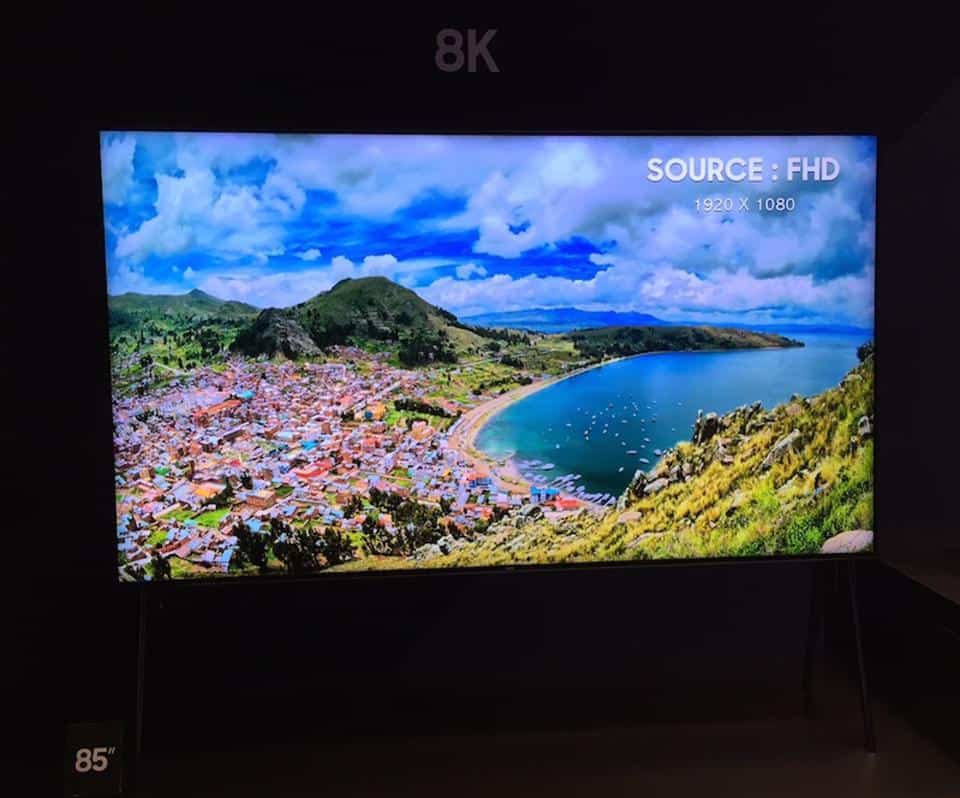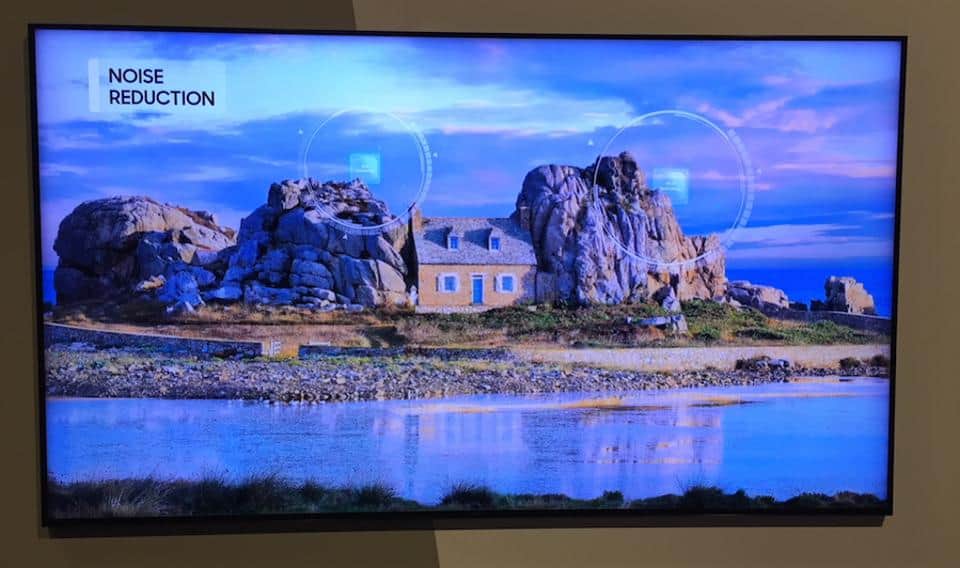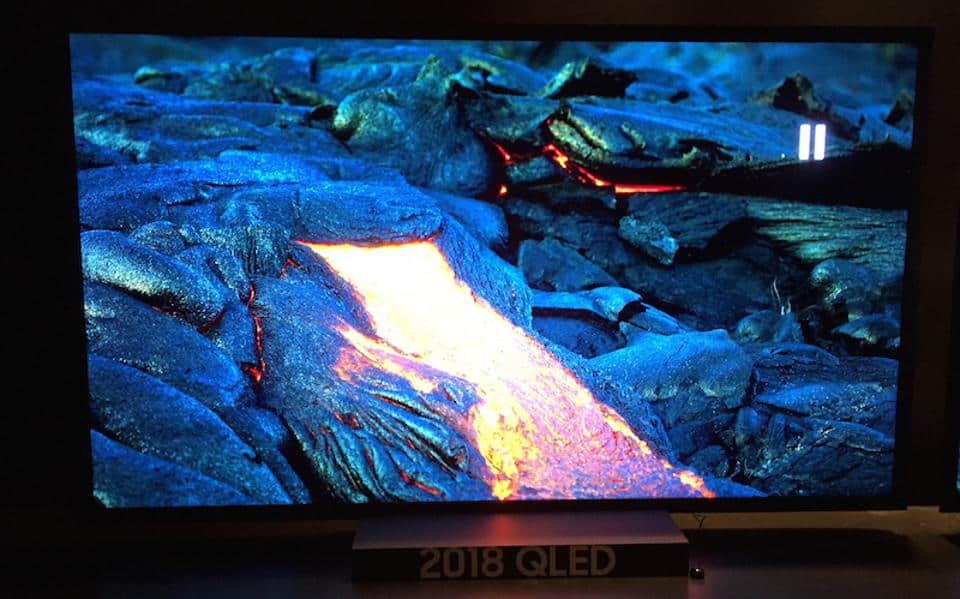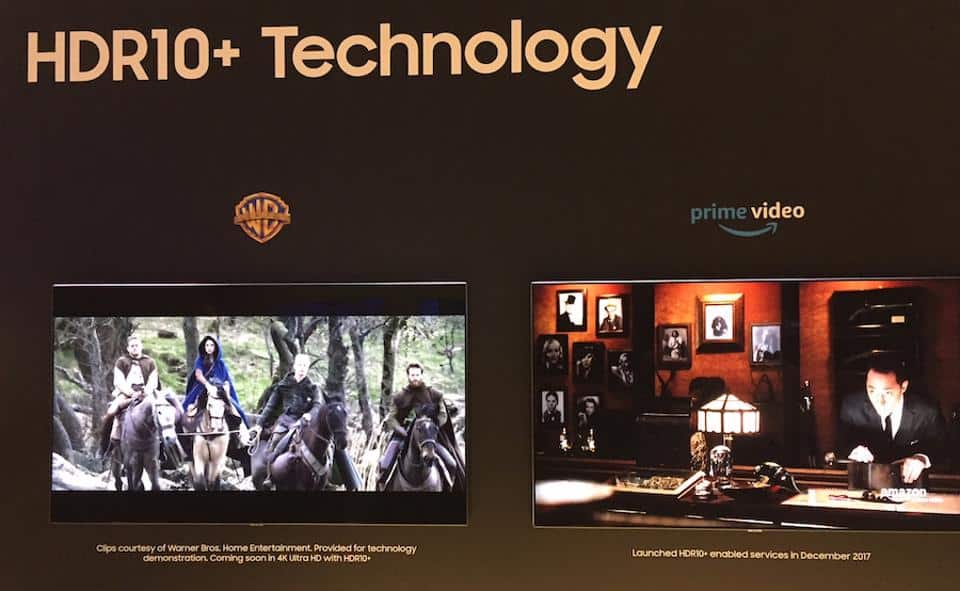After a 2017 which saw rival OLED TVs take a big chunk of the premium TV market, Samsung is fighting back by seemingly bringing forward its road map for the future of television.
For as well as showing off a new, vastly improved replacement for 2017’s flagship 9 series of QLED TVs at its traditional pre-CES unveiling event today, Samsung also showed off working samples of two truly cutting edge screens: one spectacular 8K direct-lit LCD TV with a stunning 10,000-plus separate LED dimming zones that you should actually be able to buy this year, and one concept model demonstrating in jaw-dropping fashion the potential charms of that Holy Grail of TV technology, the self-emissive LCD TV.

This latter, so-called Micro-LED model with its 146-inch screen, modular design (whereby it’s created by putting together rows of square Micro-LED blocks) is clearly – and unsurprisingly – the furthest away from becoming a consumer proposition. However, despite rather prosaically being dubbed The Wall by the Samsung marketing folk, it really did provide Samsung with a stunning way to open its 2018 CES account – and showed that while a consumer micro-LED TV might not be quite ready yet, it may also be a lot closer than you think.
The Micro LED technology features Quantum Dots mounted on top of an inorganic self-emissive diode. This means that there should be no problems with heat or color degradation despite the astonishing levels of brightness the screen was proving itself able to deliver during the demonstration we were given.
Samsung isn’t yet willing to share such figures as maximum luminance and contrast ratios of its Micro LED system. Though given the nature of the technology and the evidence of my own eyes, the hope has to be that both such numbers will be enormous.
Naturally I’ll update you as soon as any news emerges of an actual buyable Micro-LED TV. Though I have a feeling we might have to wait until at least CES 2019…
Pretty much guaranteed a 2018 launch, though, is the 8K ‘micro full array’ (MFA) model Samsung unveiled. Despite it bombarding us with some mind-boggling specifications.

For starters, it’s got an 85-inch screen (a 65-inch version was also quietly sat there in a corner, though nothing much was being said about that, so my feeling is the 85-inch set is the only one that’s definitely coming to market). Second, there’s that 8K resolution – which works out at 7680×4320 pixels. Even more excitingly, as I mentioned before it uses a FALD lighting system with an astonishing 10,000 and more separate LED dimming zones. Just as remarkably, the screen is claimed to be capable of peaking at a retina-searing 4,000 nits of brightness.
This is a key brightness figure in the AV world, as it represents the maximum brightness currently being used for mastering HDR video content for 4K Blu-rays. So if you play even the most aggressively mastered 4K Blu-ray onto Samsung’s new ‘Micro Dimming’ TV, it should be able to render the entire dynamic range without having to use tone mapping or suffer detail and tone loss in the brightest areas.
Normally you’d expect the delivery of so much brightness from an LCD TV to be accompanied by all sorts of backlight clouding problems. But that, of course, is where those 10,000+ dimming zones come in. They should offer unprecedentedly localized light control for an LCD TV and potentially allow for such intense brights to sit right alongside deep blacks with minimal ‘pollution’.

Looking more closely at the new 8K QLED model’s native 8K resolution, the temptation is to immediately say ‘what the hell do you need all those pixels for when there’s no 8K content to watch on them?!’. Intriguingly, though, Samsung has developed 8K upscaling algorithms which it claims are capable of delivering enhanced detail and pixel depth, removing jagged edges and reducing video noise with any source you watch on it.
Even more cleverly, Samsung claims this upscaling system can constantly learn what processing techniques work best for different sources and types, ever expanding its built-in database of picture management tools so that it can work more quickly and effectively on similar content next time it comes across it.
At its CES unveiling event Samsung was presenting the most prominent example of its 8K QLED TV in an easel design similar to a Samsung S range launched in 2013. It’s not been confirmed that this is the design approach the final on-sale 8K QLED TV will take, but it kind of looked right for the job…
The only problem with the new 8K QLED is that although Samsung wouldn’t say how much it will likely cost, it seems pretty likely it will be another very large number to add to those that litter its specification sheet!
Turning finally to the most imminent and ‘mainstream’ of the three TV Samsung had on show at its pre-CES unveiling event, its new (as yet unnamed) replacement for 2017’s flagship Q9F model looks set to be a huge improvement on its predecessor.
Its key claim to fame is its shift from the edge lighting found on 2017’s Q9F series to a FALD system. What’s more, the local dimming applies to seemingly hundreds of zones, promising a whole different world of contrast and light control to last year’s Q9Fs.

The new Q9F replacement is also claimed to comfortably exceed 2000 nits of maximum brightness, and uses smaller green and red Quantum Dots that enable a 5% improvement in luminance efficiency and deliver enhanced color purity. This is enough to deliver 100% of the DCI-P3 color spectrum.
As well as featuring a high number of local dimming zones, the Q9F replacement and new 8K QLED screen also share so-called Q Contrast technology. Part of this is a new Ultra Black filter that introduces barriers between pixels to reduce diagonal light leakage between pixels by 40%. Coupled with an improved anti-reflection filter on the panel’s front, this new filter leads to black levels Samsung claims are three times deeper than those of last year’s QLED flagship, and which retain their depth and detail even in relatively bright room conditions. In fact, the new anti-reflection filter is claimed to reduce the ‘mirror effect’ by as much as 20%.
You might think that the new light-focusing filter would reduce the viewing angle of the latest QLED TVs. However, Samsung has actually delivered a palpable viewing angle improvement over last year’s models by increasing the luminance across the RGB subpixels. What’s more, a prismatic lens layer in the screen manages to deliver the benefits of direct LED lighting while keeping the TV slim, and also manages to equalize the luminance from each sub-pixel so that the usually difficult blue tones are better matched up with red and green.
The latest Q Engine processing found in the Q9F replacement and new 8K QLED TVs, meanwhile, delivers 16-bit processing. This should pretty much completely remove the color banding issues with high dynamic range content that have plagued Samsung’s past couple of TV generations, as well as helping the TVs to resolve a wider range of colors and enjoy better greyscale gradations. Samsung also states that having so much processing power will improve its handling of both HDR10 and HDR10+ content.

For yes, both the Q9F replacement and the 8K QLED TVs will support the new HDR10+ picture format right out of the box. This adds a layer of extra information to the picture stream that provides TVs with additional scene by scene image data, to help them optimize their performance. Predictably, though, given Samsung’s vested interest in HDR10+, there’s no support for Dolby’s rival Dolby Vision dynamic HDR system.
The Q Engine processing has a few more potentially excellent tricks up its sleeve. For starters there’s enhanced gaming support in the shape of input lag that’s reduced to 15.4ms; an auto game mode whereby the console automatically detects when you’re using a video games console and switches to Game mode; and new variable refresh rate optimization.
Elsewhere there’s a new Smart Sound system for both equalizing sound volume across multiple sources and automatically optimizing the way sound is produced to suit the sort of content you’re watching. This works via a combination of internal analysis of the sound, and metadata embedded in the content stream.
Last but not least in the new QLED TVs’ feature arsenal is something (inevitably) called Q Smart. This umbrella term covers a whole host of smart TV advances. Particularly promising is the extent to which the new TVs offer enhanced communication with your mobile phones (both Android and iOS). You can now, for instance, use your phone to perform the entire initial installation process, and even share apps installed on your phone with the TV, without needing to input all your log-in information again when you fire the apps up on the TV.
Integrated support for Samsung’s Bixby virtual assistant, meanwhile, opens up a whole new range of voice-activated features, on top of the impressively straightforward voice control commands Samsung introduced last year. Plus, if you really, really want to, you can make your TV the control hub/monitoring center of an entire interconnected ‘Internet of Things’ home, keeping an eye on door cams and baby monitors; activating lights and smart plugs; checking up on your fridge’s energy consumption; and so on.
All in all, while a noticeable lack of actual model numbers for anything of the screens on show makes me think Samsung is still some way off from finalizing the specifications and details of its 2018 range, the brand did at least put on enough of a show to suggest that it’s hell-bent on putting the troubles of 2017 behind it.
Keep an eye on my Forbes feed for my first impressions of how all the new screens Samsung was showing off seem to be shaping up.
























